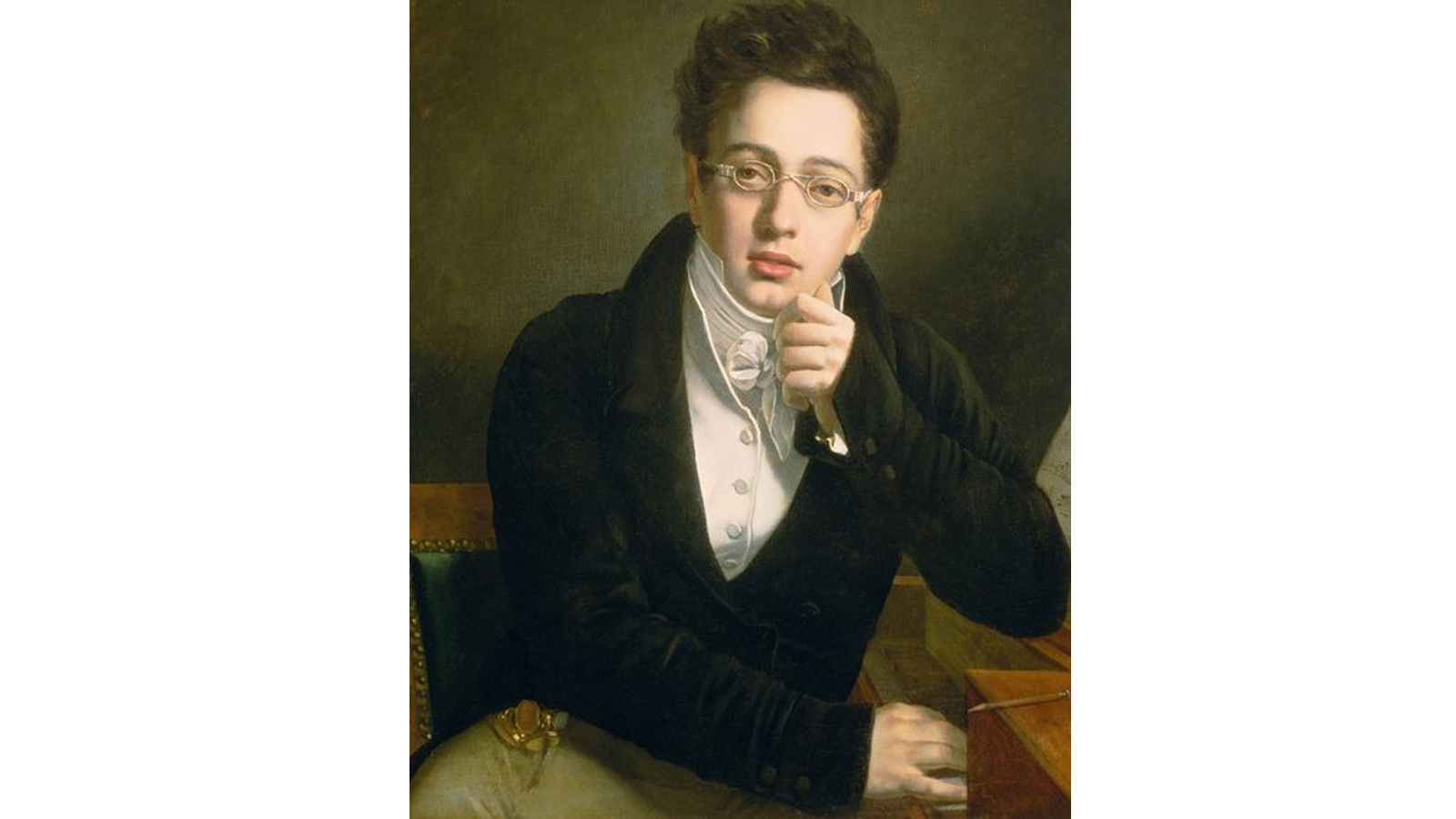
No. 22
Schubert: Piano Quintet in A, Trout

Critics writing about Schubert have to be careful when they write about Schubert's Piano Quintet in A, known as the "Trout" Quintet. They find it "mechanical" and "simplistic" and would, if they could, ignore the piece altogether, but it' s so darn popular.
At age nineteen, Franz Schubert took a poem meant to warn young women against young men and their wiles and used it as the lyric to a song that has become immortal. He wisely dropped the last stanza which made the moral of the poem painfully obvious and concentrated on the metaphoric tale instead, bringing it to vivid life. The tale is of a trout so enraptured with its life that it leaps above the surface of the water, revealing its presence to a fisherman on the bank of the stream. The tale ends with the fisherman bagging the trout. The vocal melody is almost as simple as a folk song while the piano part is a brilliant piece of place setting and animal characterization. Only Schubert could have done it. The song "Die Forelle" immediately became popular. We have numerous autographs, each with small changes, because Schubert was called upon by friends and admirers to copy out the song for them. It was so popular that it was published in the year it was written, 1817.
Two years later, twenty-two year old Schubert was on a vacation with his famous friend, baritone Johann Michael Vogl. They were staying in Vogl's home town of Steyr. They spent evenings making music with local families. Where ever Schubert happened to be, an evening of music featured his music, usually his songs. And on this trip he had with him, Vogl, already an opera star, to sing the stirring “Erlkönig” and a song that was already a fast favorite, “Die Forelle”. Such gatherings were designed to be intimate and friendly involving games, charades, skits, and always music making and dancing, especially if Schubert found his seat at the piano bench. There are a number of paintings of such gatherings. My favorite drawing features Schubert at the piano watching a skit with the family dog at his feet. In those days, making music at home was never difficult because in almost every family there were amateur musicians, many of them more than competent.
In the home of Sylvester Paumgartner, a prominent and wealthy Steyr burgher, Schubert and Vogl spent time joining in the music making. Paumgartner told Schubert that he was planning a gala evening in which he and his friends would play a new work by Johann Nepumuk Hummel, a Septet, arranged for piano, violin, viola, cello & double bass. Would Schubert, Paumgartner asked, compose a piece for the same group to be played after the Hummel? And, he asked further could the new piece include variations on Schubert's song, "The Trout"?
Schubert responded with a Quintet that is a work designed for an evening of music making with friends. It breathes an uncomplicated tunefulness that despite the carpings of critics has pleased audiences ever since. It's music meant to give pleasure, simple pleasure both to the musicians playing and to those gathered around listening. Just as Paumgartner predicted the andante variations on the song "The Trout" have proved especially popular. This is Schubert displaying his sunniest disposition; it was not to last.
Top 40 Countdown
A few years ago the listeners to WNED Classical told us what they thought a TOP 40 list of Classical pieces should be. Six hundred and twenty-two different pieces were put forward, and over nine hundred listeners participated. The result, The WNED Classical Top 40, was both startling and comforting. There were a number of surprises, Stravinsky and Copland made the list; Mendelssohn and Schumann did not! It was comforting to know that the two most popular composers were Beethoven and J.S. Bach. The biggest surprise of all was the piece that crowned the list as No. 1.